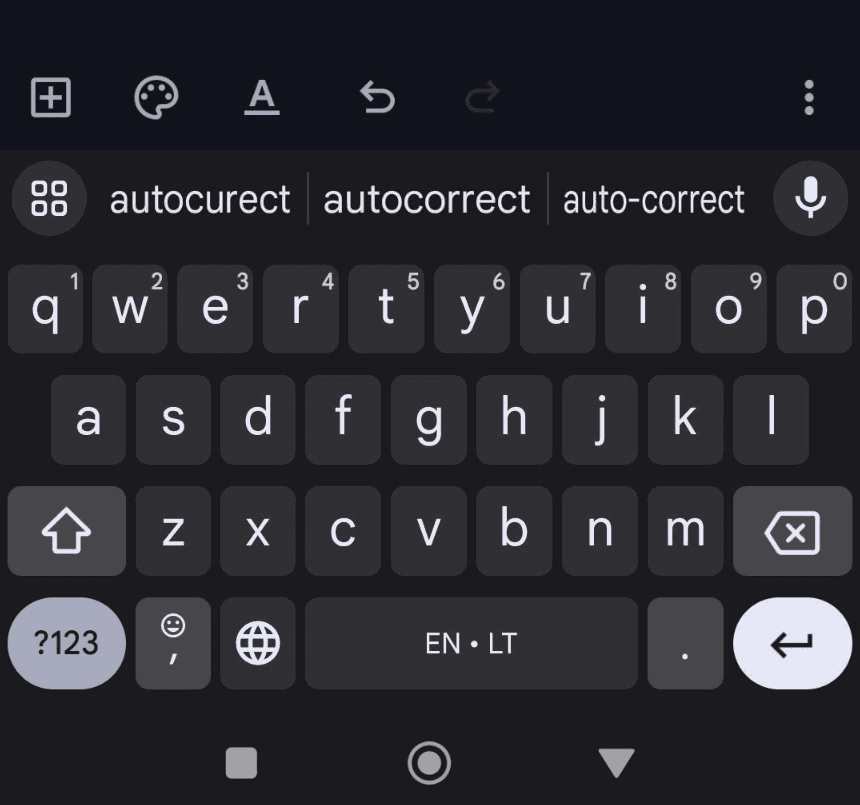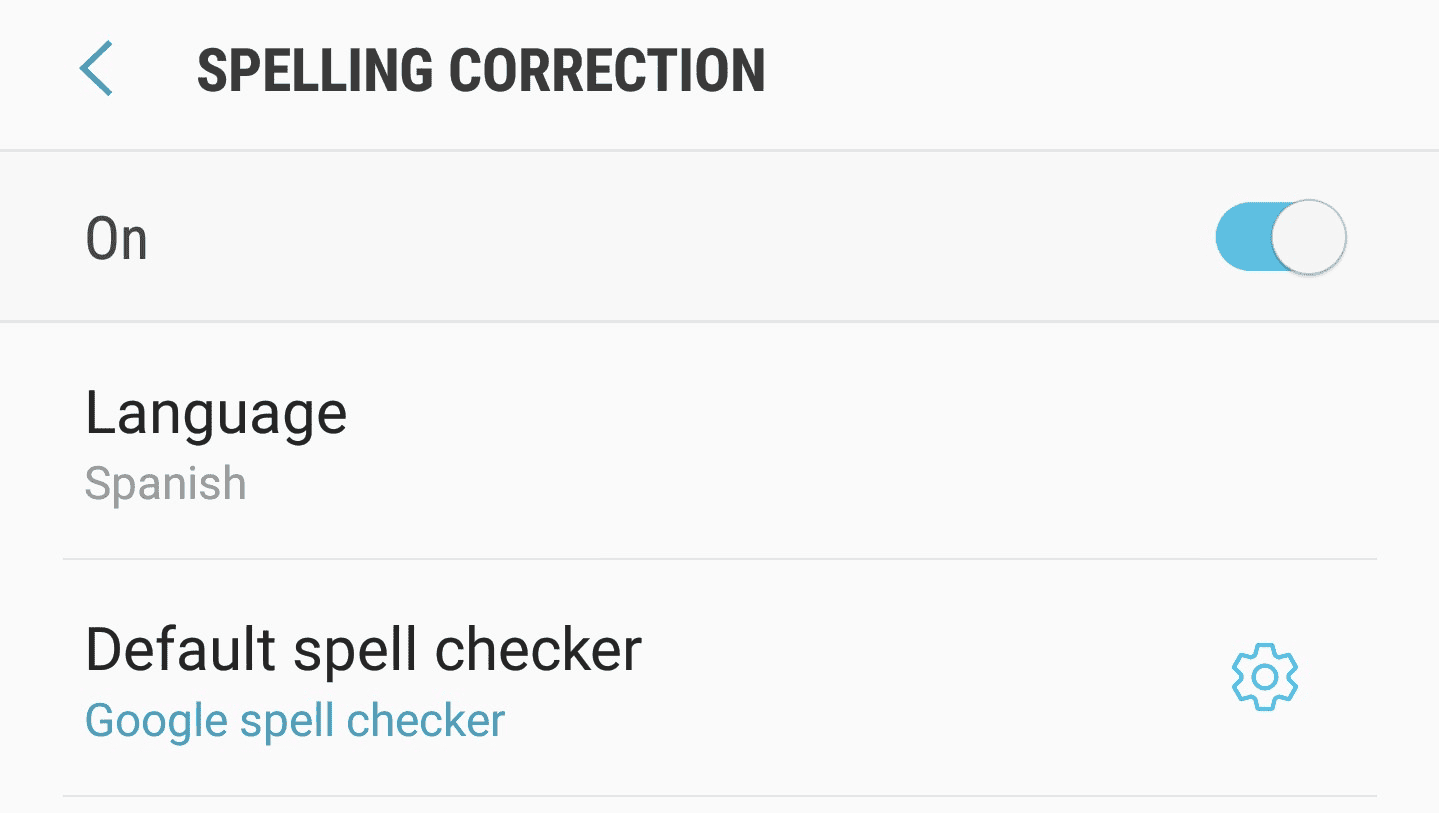Autocorrect can be a helpful tool on Android phones, but sometimes it causes more problems than it solves. Many users get frustrated when their phones change words they didn’t mean to change. To fix autocorrect on Android, go to Settings, then System, Language and input, and tap on your keyboard app.
From there, you can turn off autocorrect or adjust its settings. You might want to turn on spell check instead. This will underline misspelled words without changing them automatically. You can also add words to your personal dictionary so autocorrect won’t flag them as mistakes.
If these steps don’t work, try updating your keyboard app or switching to a different one. Some keyboard apps have more options for customizing autocorrect. You can also clear your keyboard’s data if it seems to be making a lot of mistakes.

Fix Your Android’s Autocorrect
Autocorrect can be a helpful tool, but sometimes it seems to have a mind of its own. If your Android phone is constantly changing words to something you didn’t intend, or if it’s not correcting typos at all, here’s how to take control.
Understanding Autocorrect
Autocorrect on Android uses a language model to predict what you’re trying to type. It learns from your typing habits and suggests corrections for misspelled words or typos. However, it can sometimes misinterpret your intentions, leading to frustrating errors.
Common Autocorrect Issues
Here are some common problems you might encounter with autocorrect:
- Incorrect corrections: Autocorrect changes words to something completely different from what you meant.
- Missed typos: Autocorrect fails to identify and correct obvious typos.
- Unwanted suggestions: Autocorrect suggests irrelevant or offensive words.
- Problems with names or slang: Autocorrect struggles with uncommon words, names, or slang.
Troubleshooting Autocorrect
Here are some steps to troubleshoot autocorrect problems on your Android phone:
- Check your language settings: Make sure the correct language is selected in your keyboard settings. This ensures the autocorrect dictionary matches your intended language.
- Toggle autocorrect on/off: Sometimes, simply turning autocorrect off and then back on can resolve minor glitches.
- Clear keyboard data: Clearing your keyboard’s learned data and cache can reset its predictions and improve accuracy.
- Update your keyboard app: Make sure your keyboard app is up to date. Updates often include bug fixes and improvements to autocorrect.
- Try a different keyboard app: If problems persist, consider trying a different keyboard app from the Google Play Store. Some popular options include Gboard, SwiftKey, and Grammarly.
Customizing Autocorrect
Most Android keyboards offer customization options to fine-tune autocorrect:
| Customization Option | Description |
|---|---|
| Personal Dictionary | Add words, names, or slang to your personal dictionary so autocorrect recognizes them. |
| Auto-capitalization | Control whether autocorrect automatically capitalizes words at the beginning of sentences or for proper nouns. |
| Punctuation | Adjust settings for automatic punctuation insertion, such as periods and commas. |
| Text Shortcuts | Create shortcuts for frequently used phrases or words to save time typing. |
Advanced Tips
- Train your keyboard: The more you type, the better your keyboard learns your style and vocabulary. This can improve autocorrect accuracy over time.
- Use gesture typing: Swipe your finger across the keyboard instead of tapping individual keys. This can help with typos and improve word prediction.
- Be mindful of your typing: Pay attention to your typing and use proper spacing and punctuation to help autocorrect understand your intentions.

Key Takeaways
- Autocorrect settings can be changed in the phone’s system settings
- Spell check is an alternative that highlights errors without changing words
- Updating or switching keyboard apps can provide more autocorrect options
Understanding Autocorrect on Android
Autocorrect on Android helps users type faster and more accurately. It fixes typos and suggests words as you type. Different keyboards have their own autocorrect features, which can sometimes cause issues.
The Role of Autocorrect and Its Impact on Typing
Autocorrect fixes spelling mistakes and suggests words as you type. It learns from your typing habits over time. This can speed up typing and reduce errors.
Autocorrect can be helpful for:
- Fixing common typos
- Suggesting words based on context
- Adding punctuation automatically
But it can also cause problems:
- Changing correct words to incorrect ones
- Replacing slang or informal language
- Making embarrassing mistakes in messages
Users can usually train autocorrect by adding words to their dictionary. This helps it learn personal writing styles and preferences.
Comparison Between Popular Android Keyboards
Android phones come with different keyboard options. Each has its own autocorrect features.
Gboard (Google Keyboard)
- Wide language support
- Good at predicting next words
- Customizable autocorrect settings
Samsung Keyboard
- Built-in on Samsung Galaxy phones
- Decent word prediction
- Less language options than Gboard
SwiftKey
- Strong word prediction
- Learns typing patterns quickly
- Good multi-language support
Users can choose the keyboard that works best for them. They can also adjust autocorrect settings within each keyboard app.
Common Issues and User Complaints
Many Android users face problems with autocorrect. These issues can be frustrating and lead to typing errors.
Common complaints:
- Autocorrect changing correct words
- Not recognizing names or technical terms
- Slow to learn new words or phrases
- Inconsistent behavior across apps
Some users find autocorrect more annoying than helpful. They may choose to turn it off completely. Others prefer to keep it on but adjust its settings.
To fix these issues, users can:
- Update their keyboard app
- Clear the app’s data and cache
- Add problem words to the dictionary
- Adjust sensitivity settings
If problems persist, switching to a different keyboard might help.
Adjusting Autocorrect Settings
Android phones let users change how autocorrect works. You can turn it on or off, add new words, and pick different languages.
How to Enable or Disable Autocorrect
To turn autocorrect on or off:
- Open Settings
- Tap System
- Select Language and input
- Choose Virtual keyboard
- Pick your keyboard (like Gboard)
- Tap Text correction
- Toggle Auto-correction on or off
Some phones might have slightly different steps. Look for keyboard settings if you can’t find these options.
You can also turn spell check on or off. This helps catch typos without changing words automatically.
Customizing Keyboard Languages and Dictionaries
Android lets you use multiple languages on your keyboard. To add a new language:
- Go to keyboard settings
- Tap Languages
- Select Add keyboard
- Pick the language you want
You can switch between languages by tapping the globe icon on your keyboard.
Each language has its own dictionary. This helps autocorrect work better for that language.
Managing Personal Dictionary and Learned Words
Android learns new words as you type. It adds these to your personal dictionary. To see or change your personal dictionary:
- Open keyboard settings
- Tap Dictionary
- Select Personal dictionary
Here you can add new words or remove ones you don’t want. This is helpful for names or slang that aren’t in the main dictionary.
To clear all learned words:
- Go to keyboard settings
- Tap Advanced
- Select Delete learned words
This starts your keyboard’s learning process over from scratch.
Advanced Autocorrect Features and Troubleshooting
Android phones have many tools to fix autocorrect issues. These include ways to handle auto-replace problems, use voice typing, and solve stubborn autocorrect errors.
Dealing with Auto-Replacement and Predictive Text Issues
Auto-replace and predictive text can sometimes cause trouble. To fix this on Gboard:
- Open Settings
- Go to System > Languages and input
- Tap On-screen keyboard > Gboard
- Select Text correction
Here, you can turn off auto-correction or change how it works. You can also adjust the suggestion strip and next-word suggestions.
For Samsung phones:
- Go to Settings > General Management
- Tap Samsung Keyboard Settings
- Turn off Predictive text under Smart typing
These steps let you control how much help the keyboard gives you.
Improving Text Correction with Voice Typing and Grammar Tools
Voice typing can help avoid spelling mistakes. To use it:
- Tap the microphone icon on your keyboard
- Speak clearly
- Check the text and fix any errors
Many keyboards also have grammar checks. These tools can catch mistakes that basic spell checkers miss. Look for “Grammar check” in your keyboard settings to turn this on.
Some phones have a built-in spell checker. To use it:
- Go to Settings > System > Languages and input
- Tap Spell checker
- Turn it on and choose your language
Resolving Persistent Autocorrect Problems
If autocorrect keeps causing issues:
Clear your keyboard app’s data:
- Go to Settings > Apps > All apps
- Find your keyboard app (like Gboard)
- Tap Storage > Clear data
Update your keyboard app from the Play Store
Try a different keyboard app if problems continue
Check your phone’s language settings to make sure they’re correct
If nothing else works, you can reset your keyboard to its default settings. This will erase your personal dictionary and learned words, but it can fix many stubborn problems.







